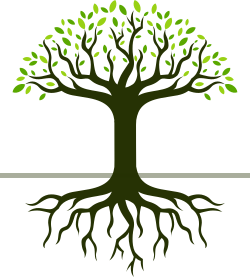
Since this is my personal website, it focuses on my research roots. I discuss the research philosophy that animates me and highlight the people who taught me how to think those thoughts.
My lab website demonstrates how this philosophy gets translated into practice, highlighting the branches and the leaves of the tree.
The way I think about research is through the metaphor of the research tree. This was introduced to me by my PhD advisor, Daniela Rus. Though she thinks of the research tree as a data structure, I like thinking of it as an actual tree.

This metaphor works from the bottom up: